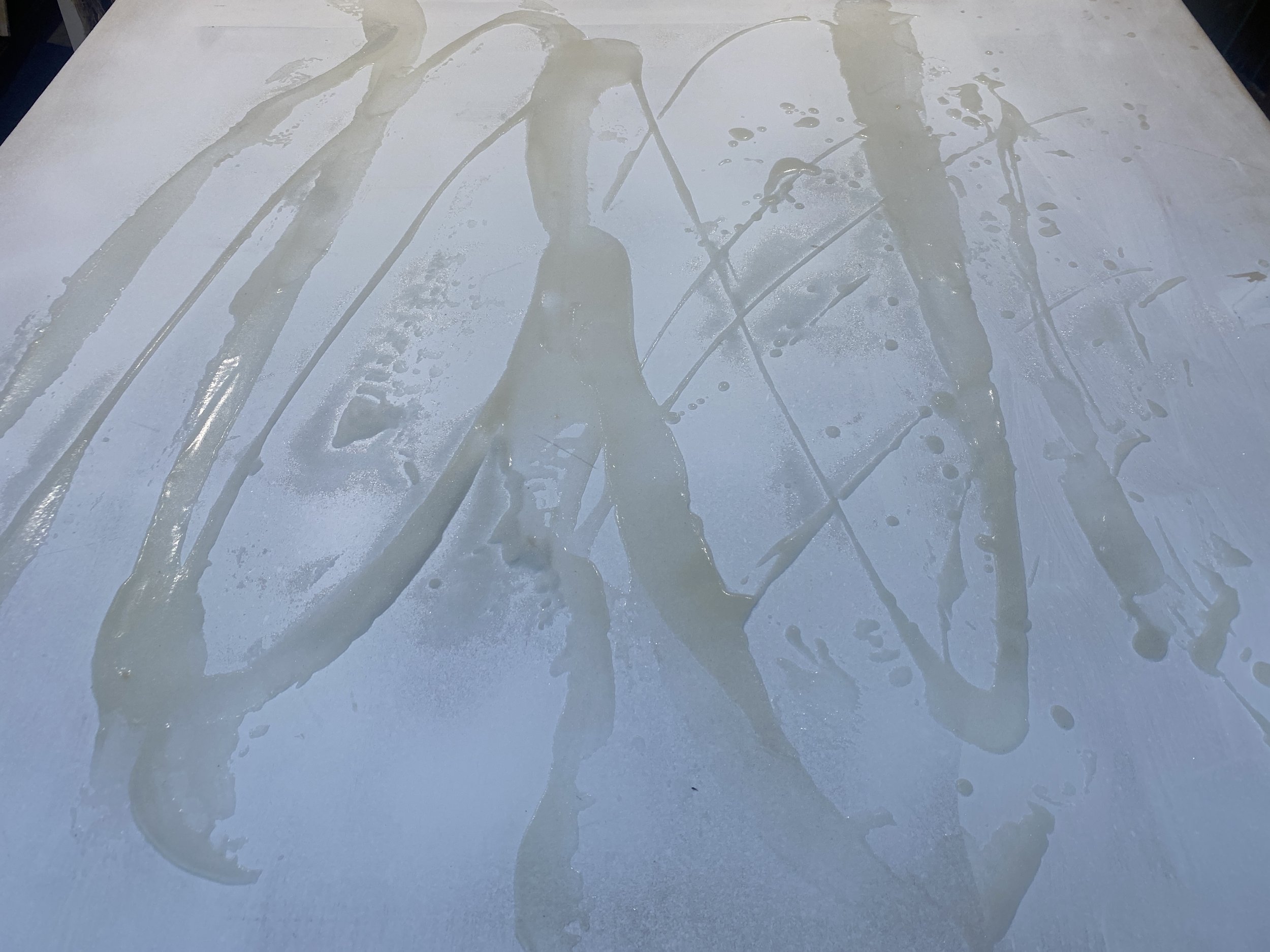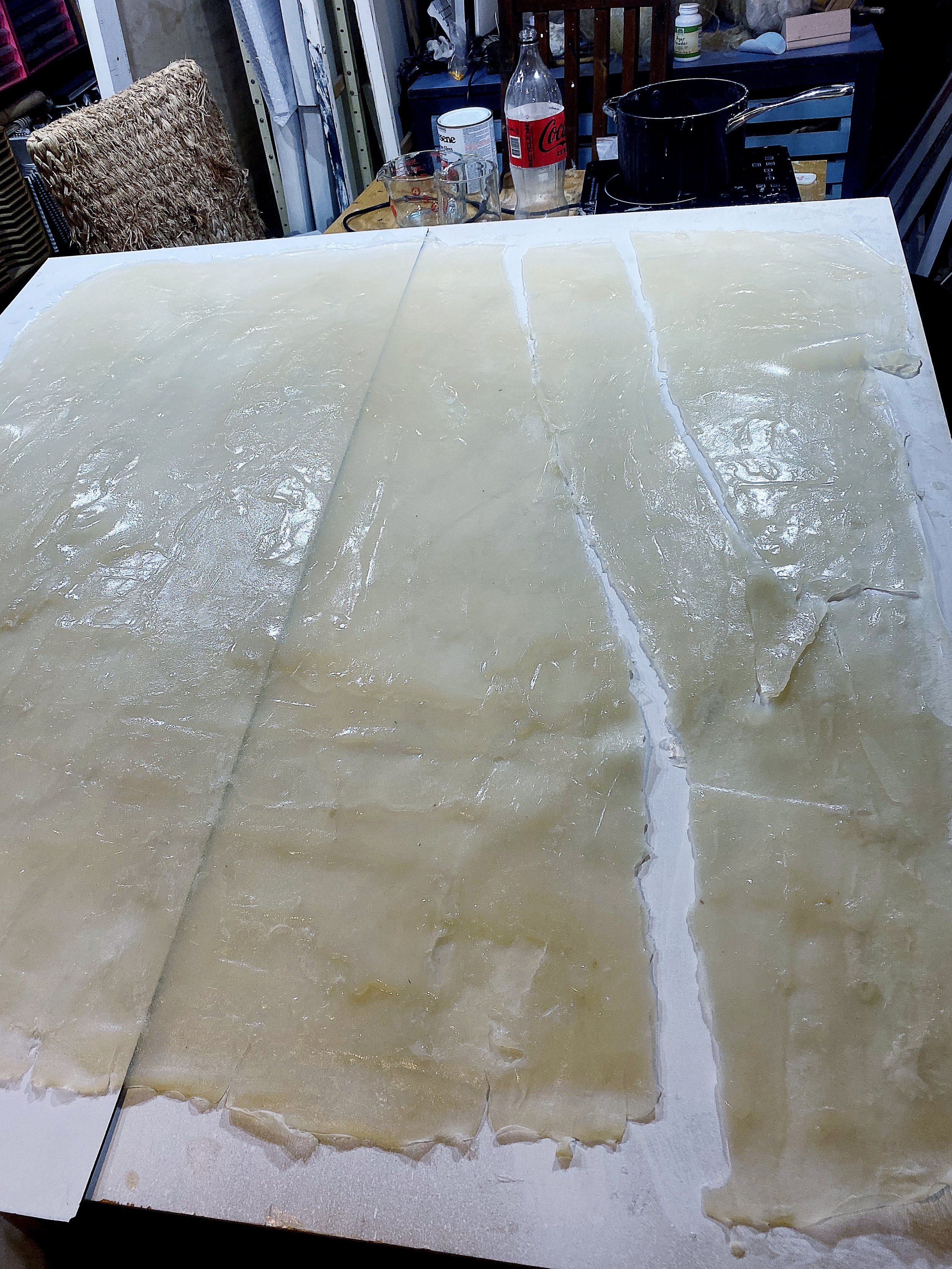Material Investigations X - Large Skins
I have been making some larger sheets of bioplastic skins using a 1200mm x 1200mm sheet of primed plywood as a surface to work on. Unfortunately I have been coming against some problems.
Large Sheet #1
In making the first skin, I poured multiple layers of the hot liquid bioplastic onto the surface, spreading with a large spatula. I did add tiny glass beads to the mixture and also to the surface directly. After about 24 hours, I attempted to roll the bioplastic around some pillows to allow it to dry in a curve. The bioplastic split in several places and it was evident that some of the separately poured layers had not adhered together. Some of this was caused by the glass beads which had been scattered on the surface rather than being mixed into the bioplastic.
Large Sheet #2
I melted down the bioplastic and tried again. The glass beads were mixed in well and I lessened the number of pours so it was essentially just two layers in this second sheet. The bioplastic sheet seemed to have more integrity and held better when I rolled it around a plumbing pipe with some packing fabric (to stop it sticking). 48 hours after rolling it up and having 24 hours with the dehumidifier, I was concerned it would not dry fast enough and mould would start to grow. I wanted to lay it out The bioplastic had cracked when it was rolled and cracked even more when I unrolled it. There was also a clear divide between the layers of bioplastic.
Large Sheet #3
I created a third sheet which was been made with one pour (layer). I used a large pot which I think is about 8 litres. The layer was a little thinner but I was still able to get fairly substantial coverage on the board. I have just left this one to dry flat on the board. Perhaps being a bit thinner it won’t be so inclined to crack when rolled. I have not added glycerine (which increases flexibility) to these mixtures as I want it to be as rigid as possible.
I was expecting the bioplastic to adhere well to the plywood as it is a little more porous than glass or metal sheets I have used to cure bioplastic on before. Previously I have been able to cure the bioplastic vertically and as such I placed the plywood vertically in the drying room. Unfortunately, within an hour, the bioplastic slid off the wood and crumpled into a heap on the floor. I guess that is all part of process and plans going awry due to the materials doing what they want to do. I decided to leave it to dry as it lay and let the material do as it wants.
As the bioplastic dried the glass beads became noticeable within the bioplastic and on the torn edges. I’m interested to see how this develops.











